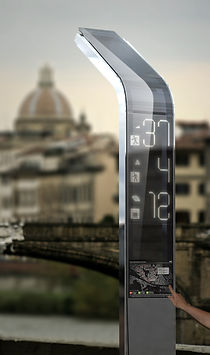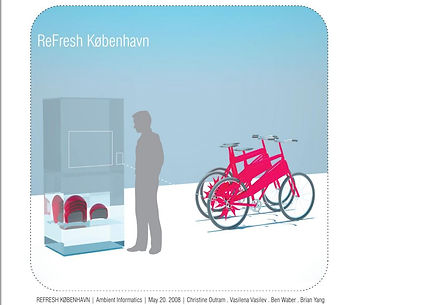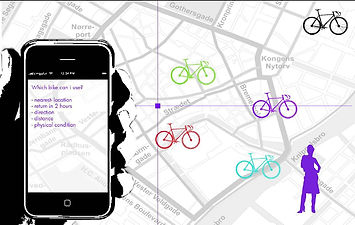
SUMMER 2013
The Future of Transportation in Downtown Miami
When travelling around the city of Miami, the most preferred method of transportation is undeniably the car. The streets and buildings are designed to facilitate the navigation of cars, which determines its hierarchy over other forms of transportation, and more specifically public transportation. Introducing a more interactive and dynamic way of using public transportation can transform way Miami’s public travels.
Changing the way we look at the Bus Stop
This video describes how the EYEstop can begin to affect future transportation as the public will find it easier to utilize this method for seeking public transportation.
The Future of Bus Stops: MIT's EYEStop






Introducing the first design for Public transportation is MIT’s EyeStop. This futuristic bus stop isn’t just designed for waiting for one’s bus to arrive, this is ground breaking technology allows the user to find the bus route they are searching for and the exact location of where each bus is, it directs the public to popular locations, and gives access for ticket purchase at the booth. In addition to the features mentioned, the EyeStop is also solar paneled, and utilizes its power to display advertisements and other communication devices.
Ideas that can transform the design of the EyeStop to accommodate the Miami culture are the following:
-
Using the EyeStop’s power to be a booth for charging cellhones and other devices
-
Provides fresh drinking water for people walking or waiting at the EyeStop
-
Having the EyeStop being built out of local materials
Can these creative ideas transform the manner in which Miami’s way-finding and navigation is developed? The question solely leads to more and new creations as to how to improve the way people in Miami get around without a car.
Cycling Through the City: The CopenCycle Project








Categorizing Bikes by District


Affective Intelligent Driving Agent
Public transportation is one method of traveling in urban areas without the interference of a car, but the bicycle becomes one of the most influential forms of alternative transportation as it grasps the concept of the owner’s personalization as owning a car would. Traveling around the city in bikes has been proven very successful for cities like Copenhagen, which has generated a new traffic ideology abiding by the way people, behave when riding bikes in the city and sharing the streets and traffic lights with cars.
The CopenCycle project is a system that allows bike riders to use a series of technologies that facilitate navigation around the urban scale. One of these features is the ability to rent a bike online from one’s personal computer or smartphone and picking up the bike at one of the kiosk around the city’s districts. These bikes also come equipped with a helmet that provides a camera for recording one’s path as a form of way-finding around the city.
Another feature of the CopenCycle Project is extending the network of cycling to mobile data. Knowing exactly what district one is in based on color-coded bikes has facilitated the public to find their way around a specific location and the user receives an app to provide them with information about the district and the usable hours of the bicycle.
Each bicycle contains a color that is specific to its district and allows researchers to observe the paths that bikers f each town takes. This data is the transformed to help the traffic engineers figure out what improvements to make on roads to allow the ease of sharing the streets with cars.
The AIDA is a new form of GPS that accommodate to the mood and behavior of the driver. It provides safe routes and aides the driver in case of unexpected detour or construction zones. The AIDA personifies the car to help with issues of road rage and common distraction to prevent accidents and provide the experience quicker travel from one space to another.
This video shows how MIT utilizes AIDA to transform the way people experience daily car traveling and usage.